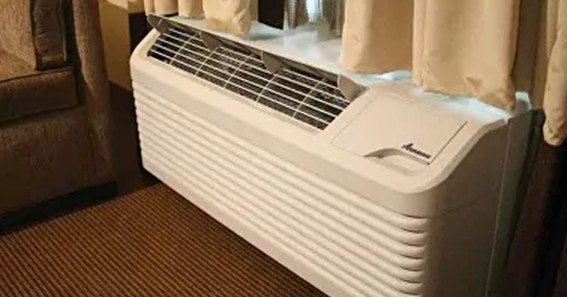A Packaged Terminal Air Conditioner (PTAC) unit is a self-contained heating and cooling system commonly installed through walls in various settings, including hotels, apartments, and offices. These units offer an efficient solution for individual room temperature control without the need for extensive ductwork.
What is a PTAC AC Unit?
A PTAC AC unit integrates both cooling and heating functions into a single appliance, typically mounted through an exterior wall. This design allows for direct ventilation and temperature regulation of individual rooms. PTAC units are prevalent in environments where separate climate control is desired for each room, such as in hospitality and residential buildings.
Features and Benefits of PTAC Units
- Versatility: PTAC units provide both heating and cooling capabilities, making them suitable for year-round use.
- Energy Efficiency: Modern PTAC units are designed with energy-saving features, including programmable thermostats and energy-efficient compressors. Selecting the appropriate size and model can lead to significant energy savings.
- Individualized Control: Each unit operates independently, allowing occupants to set their preferred room temperature without affecting other areas.
- Easy Installation: Designed for through-the-wall mounting, PTAC units require minimal structural modifications, making them ideal for both new constructions and retrofits.
Installation and Maintenance Tips
- Proper Sizing: Ensure the PTAC unit’s capacity matches the room size for optimal efficiency. Units that are too powerful can lead to short cycling, while undersized units may not adequately condition the space.
- Regular Cleaning: Clean or replace air filters regularly to maintain airflow and indoor air quality. Additionally, keep the coils free from dust and debris to ensure efficient operation.
- Leak Checks: Periodically inspect the unit for refrigerant leaks or water accumulation, addressing any issues promptly to prevent further damage.
- Professional Servicing: Schedule annual maintenance with a qualified HVAC technician to ensure all components function correctly and to extend the unit’s lifespan.
Energy Efficiency Considerations
When selecting a PTAC unit, consider models with high Energy Efficiency Ratios (EER) and features like programmable thermostats and motion sensors. These features can enhance energy savings by adjusting the operation based on occupancy and usage patterns.
Conclusion
PTAC AC units offer a practical and efficient solution for individualized climate control in various settings. By understanding their features, benefits, and maintenance requirements, users can optimize comfort and energy efficiency in their spaces.
FAQs
1. What does PTAC stand for?
PTAC stands for Packaged Terminal Air Conditioner, a self-contained heating and cooling system installed through a wall.
2. Where are PTAC units commonly used?
PTAC units are commonly found in hotels, motels, apartments, and offices where individual room temperature control is needed.
3. How often should PTAC filters be cleaned or replaced?
It’s recommended to clean or replace PTAC filters every few months to ensure unobstructed airflow and maintain indoor air quality.
4. Are PTAC units energy-efficient?
Modern PTAC units are designed with energy-saving features, and selecting the appropriate size and model can lead to significant energy savings.
5. Can I install a PTAC unit myself?
While some individuals may choose to install PTAC units themselves, it’s advisable to consult with or hire a professional to ensure proper installation and compliance with local building codes.








